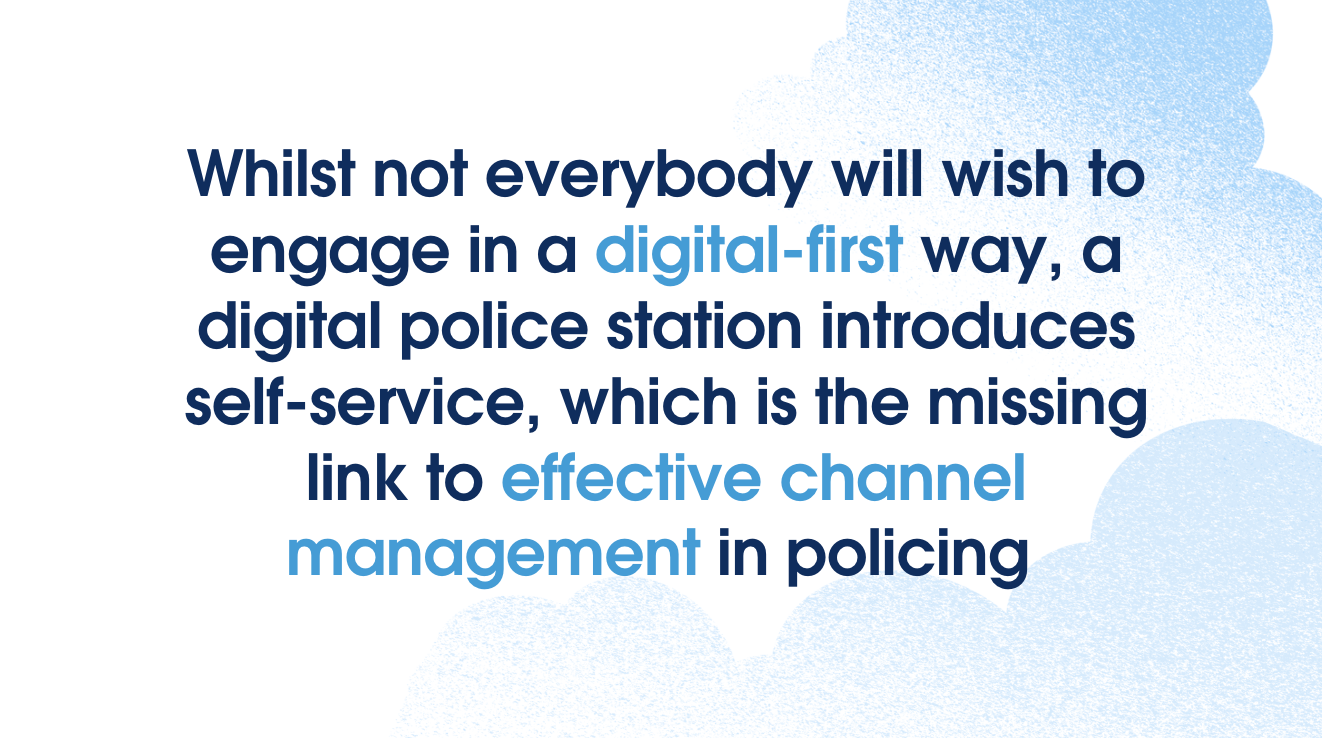How a digital police station is transforming victim journeys



Former police chief inspector Andy Doran joined the force in 2006. However, he left Lancashire Constabulary for Salesforce in 2021 in a bid to transform the way policing and citizens interact.
UK Public Sector Team
Former police chief inspector Andy Doran joined the force in 2006. However, he left Lancashire Constabulary for Salesforce in 2021 in a bid to transform the way policing and citizens interact.

What issues did police forces have keeping victims updated when you left the police?
Policing is facing a difficult time in terms of public trust and confidence, but it is essential to recognise the vast majority of dedicated officers and staff who go to work every day and put others first. However, their time is often taken up with demands that the public would not necessarily expect the police to deal with, and this has a profound impact on their ability to keep victims updated. From my experience, this results in repeated calls on 101 and 999 from victims and members of the public asking for an update. Lack of updates also drives increased complaints and victim and witness attrition. Keeping victims updated is essential to building trust and confidence in our police service.
What is wrong with the way police record crimes?
The National Crime Recording Standards set out how policing must record crime, so it is less about what is wrong with the way it is recorded and more about how traditional policing technology and thinking focuses on the crime recording process as the golden thread. Often unintentionally, this shifts the raison d’être to ticking a compliance box but missing the point. Victims should always be at the centre of the investigation and, whilst crime recording is essential to legitimacy, it should never be at the expense of putting victims first.
How does a digital police station improve this process?
A digital police station adds the requisite variety to meet the needs of the public. Whilst not everybody will wish to engage in a digital-first way, a digital police station introduces self-service, which is the missing link to effective channel management in policing. Whilst policing has opened up new digital channels to support the public, they have become digital letterboxes rather than a way for the public to get instant answers to predictable common questions. Salesforce is working with leading UK police forces on delivering personalised and automated citizen experiences, including a citizen portal where victims can log in and get updates on their crime while speaking with the officer in their case. This provides a superior user experience, reduces staff hindrance stressors, and provides a more cost-effective service delivery model.
Why hasn’t this process been made smoother before now?
We keep throwing staff at the issue and becoming really efficient at simply doing the wrong thing, faster. Throughout policing, we have people acting as system integrators because the incumbent point-to-point applications often fail to communicate with each other. This means that officers and police staff have to double and triple key data between systems. Technology integration is often seen as a nice-to-have and not thought about as a strategic asset. This afterthought perpetuates the need for more back-office teams who manually enter data rather than use their knowledge and experience to add value.
What issues have legacy technology caused in this process?
I think it is less about apportioning blame to legacy technology and more about how policing buys technology. Traditionally, policing buys technology, often on-premise, to fix a specific problem. As such, you end up with technical debt and spending more time keeping the lights on than innovating and making it easier for officers and staff to provide outstanding services to communities. Whilst the unit cost of these systems often appears more cost-effective, the proof is in the total cost of ownership and return on investment. From experience, this is often lacking. Moving to software and platform as a service enables IT teams to focus less on patching and maintenance and more on driving the changes that will make a difference to officers and staff, who in turn can provide a better service to the public.
Build a modern, digital public sector.
Salesforce is the platform that helps the Public Sector transform its engagements – giving public servants a 360-degree view of citizens, stakeholders and partners.






















